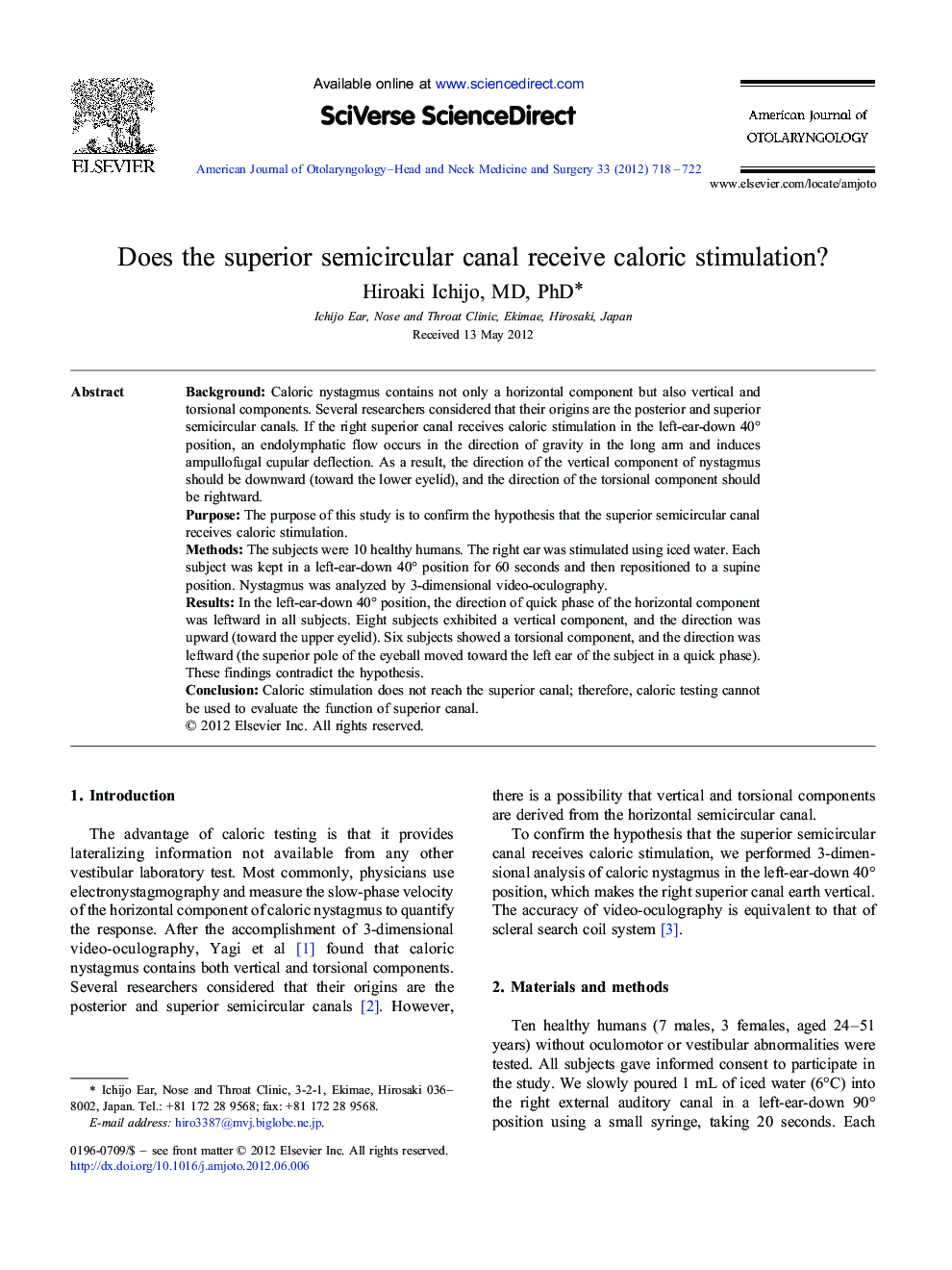| Article ID | Journal | Published Year | Pages | File Type |
|---|---|---|---|---|
| 4103320 | American Journal of Otolaryngology | 2012 | 5 Pages |
BackgroundCaloric nystagmus contains not only a horizontal component but also vertical and torsional components. Several researchers considered that their origins are the posterior and superior semicircular canals. If the right superior canal receives caloric stimulation in the left-ear-down 40° position, an endolymphatic flow occurs in the direction of gravity in the long arm and induces ampullofugal cupular deflection. As a result, the direction of the vertical component of nystagmus should be downward (toward the lower eyelid), and the direction of the torsional component should be rightward.PurposeThe purpose of this study is to confirm the hypothesis that the superior semicircular canal receives caloric stimulation.MethodsThe subjects were 10 healthy humans. The right ear was stimulated using iced water. Each subject was kept in a left-ear-down 40° position for 60 seconds and then repositioned to a supine position. Nystagmus was analyzed by 3-dimensional video-oculography.ResultsIn the left-ear-down 40° position, the direction of quick phase of the horizontal component was leftward in all subjects. Eight subjects exhibited a vertical component, and the direction was upward (toward the upper eyelid). Six subjects showed a torsional component, and the direction was leftward (the superior pole of the eyeball moved toward the left ear of the subject in a quick phase). These findings contradict the hypothesis.ConclusionCaloric stimulation does not reach the superior canal; therefore, caloric testing cannot be used to evaluate the function of superior canal.
